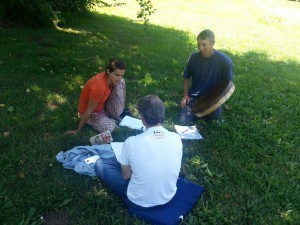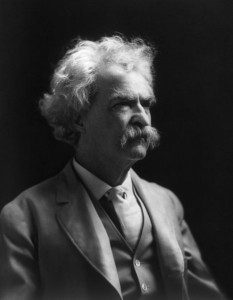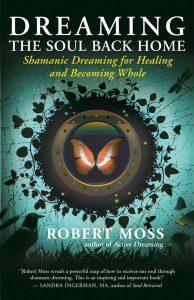
Community, as Peter Block defines it in a provocative book, is about the experience of belonging. To belong is to feel at home, to know you are among family or friends. When something belongs to you, you are an owner; you have a stake in something. Playing with the word, Block notes that belonging evokes longing to be – to come fully alive, to embody fully a deeper purpose in life.
The model leader in the kind of community Block seeks to midwife is one who can bring the right people together in the right way, name the right questions for group exploration (“what can we create together?”) and listen as others find their voice and their power. Such things are best done in small groups, which Block promotes as the best agents of transformation.
It strikes me that dream-sharing groups are now at the vanguard in developing the kind of social space that Block advocates. Dream groups are typically small (six to twelve people) and establish a different kind of space, and a deep sense of belonging to an intentional community. They are circles in which each member receives the gift of deep listening, the chance to play leader or teacher, and the opportunity to tell their life stories and re-vision those stories.
In Active Dreaming circles, we recognize the need for strong leadership to provide the structure and dynamic within which extraordinary group experiences can be shared. This includes selecting and defining a safe and protected physical space. It means gently insisting on time limits (dreamers can get things done on time), building and maintaining circle energy and keeping everything moving for the two or three hours of a typical session, and making sure that everyone feels at home and that everyone’s voice is heard. Part of the leader’s job in an Active Dreaming circle is to ensure that a lively alternation of discussion, movement and conscious group dream travel keeps everyone alert and engaged..
Above all, the leader will enforce simple rules that ensure that no one present – least of all the leader herself – will try to claim authority over anyone else’s dreams or life story. We are only permitted to comment on each other’s material by saying “if it were my dream” or “if it were my life.” In this way, we offer associations and suggestions while encouraging the dreamer to claim the power of her own dreams – and to take the necessary action to embody their energy and guidance in the world. Finally, the leader of an Active Dreaming will give her power away repeatedly by inviting others to take charge in leading the processes.
In these ways, we fulfill Block’s definition of the mode of leadership required to restore and re-story our communities: “Perhaps the real task of leadership is to confront people with their freedom.”
The quotes are from Peter Block, Community: The Structure of Belonging (San Francisco: Berrett-Koehler Publishers)
For more on community dreamwork, please see my book Active Dreaming, published by New World Library.

